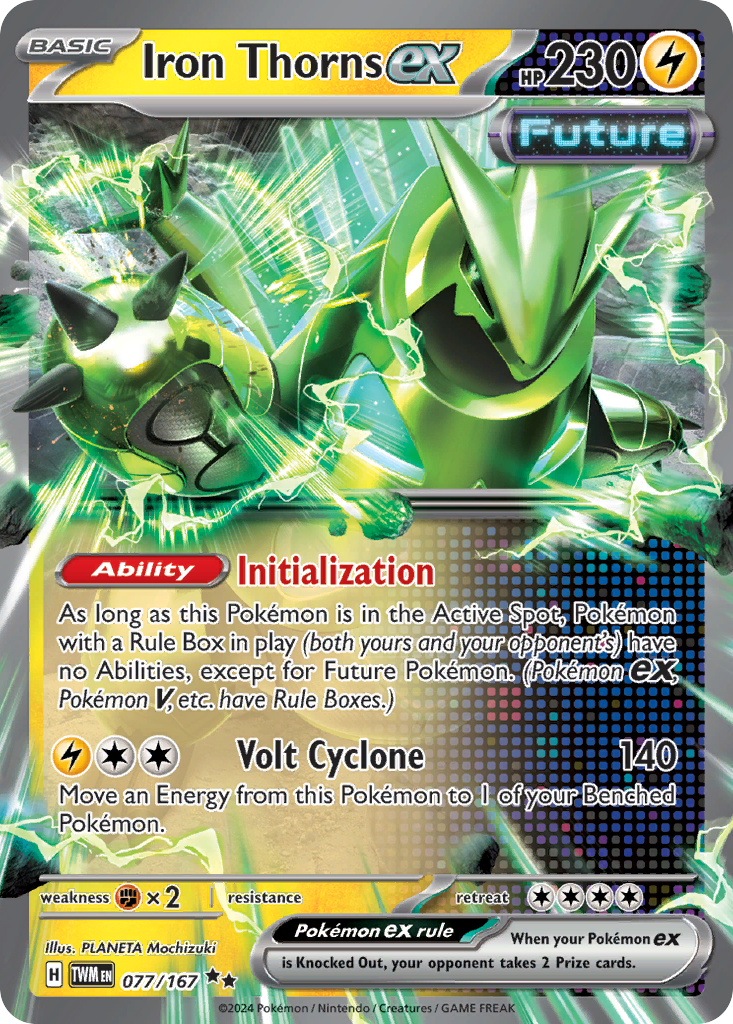Worlds Meta and Testing Results, Part 1
Hello everyone! With the World Championships coming just around the corner, I've been testing to try and narrow down what I would like to play for the tournament. Instead of going over specific decks for these next two articles, I'm going to discuss the meta as a whole: decks, trends, and my personal opinions based on testing the various decks. Hopefully this will provide some insight into this new format and, if you're going to Worlds, some additional information and direction regarding the decks.
The only difference between the formats for Worlds and NAIC is, of course, Shrouded Fable. This set has some great cards, but all of the decks that were good for NAIC are still more or less playable. However, thanks to the introduction of Dusknoir and Kyurem, as well as general meta shifts, Charizard ex and Regidrago VSTAR find themselves at the forefront of the metagame. Charizard and Regidrago are the most hyped and popular decks at the moment, and for good reason. These decks are incredibly powerful and can stand up against a variety of threats. Lost Box and Gardevoir ex were the big winners at NAIC, and they remain relevant, but they are taking a backseat to those other two decks. Rounding out the relevant decks are Raging Bolt ex, Lugia VSTAR, Dragapult ex, and Snorlax. I will discuss all eight of these big meta decks in this two-article series before Worlds.
Lost Box
Let's start by talking about Lost Box, the deck that won NAIC. Typically the deck that wins NAIC is still at least decent for Worlds. I wouldn't go so far to say that Lost Box is unplayable, but it is certainly a lot worse now. Lost Box suffers from poor matchups against both Regidrago and Charizard, which puts it in a tough spot. On the other hand, there have been several techs and innovations to help with the Charizard matchup. With those and Lost Box's natural aggression, it has a reasonable chance against Charizard, though it still struggles against Regidrago.
The version that won NAIC was focused on fast aggression, and also included Iron Thorns ex as a tech. I think Iron Thorns is incredibly strong right now. It is able to efficiently disrupt and slow down other meta decks, including both Charizard and Regidrago. It doesn't beat those decks on its own, but it is a viable option in some games, and it can certainly help. There are two main problems with Iron Thorns, however. First is that it is somewhat awkward to actually use. It needs to be in the Active Spot, ideally with three Energy, and it has an exorbitant Retreat Cost. This makes it a bit unwieldy to play, as it's difficult for Lost Box to effectively utilize this card while also doing the other things it wants to be doing. The second issue is that it only does 140 damage. This isn't that bad, as it still two-shots most Pokemon, but not Charizard ex. Even though this card slows down Charizard, it can't actually KO one, so you're still out of luck if the Charizard player gets set up fast enough. However, Iron Thorns can KO Pidgeot ex in one shot, which is great. Unfortunately, Lost Box runs rather low on gust cards, so this play might not always end up happening. In short, Iron Thorns is very strong, but has quite a lot of downsides attached to it.
Another tech I've seen is Iron Valiant ex. Iron Valiant doesn't hard-counter anything in particular, but it has a variety of applications that make it useful in most matchups. Against Evolution-based decks, its Ability spreads damage, which helps Sableye set up its board-wipe plays. Against other decks, Iron Valiant's attack is fantastic. It deals 200, plus 20 from the Ability, which KOs the likes of Teal Mask Ogerpon ex and Regidrago V. This isn't redundant with Bloodmoon Ursaluna ex, since Ursaluna is very inefficient in the early game, but you still want to KO some of those big Basic Pokemon. In my opinion, Iron Valiant is quite good.
The final version of the deck pivots to focus more on Sableye by including a second copy as well as a Technical Machine: Devolution. These changes are designed to target Charizard specifically. Some builds also include Technical Machine: Crisis Punch for a decent option to close out games against Regidrago VSTAR. For example, you can take two Prizes off the Bench with repeated Sableye snipes, two Prizes with Ursaluna plus a gust card, and the final two on their Regidrago VSTAR with Crisis Punch. Of course, Crisis Punch can be used against other decks too. However, you can't really include these cards while still maintaining the turbo aspect of the deck. Tech cards cut into counts of PokéStop and Lost Vacuum, and also make PokeStop riskier by potentially discarding these cards. If I was playing Lost Box, I would probably play this version of the deck. I've found it to work quite well against Charizard, although Regidrago and Gardevoir are still tougher matchups. I would also readjust the Stadium lineup to accommodate for the Tool cards. While I've always been PokeStop's biggest fan, it doesn't make quite as much sense in the Tool-heavy build. I currently prefer a list like this:
This concludes the public portion of this article.
If you'd like to continue reading, consider purchasing a PokeBeach premium membership! If you're not completely satisfied with your membership, you can request a full refund within 30 days.
Each week we post high-quality content from some of the game's top players. Our article program isn't a corporate operation, advertising front, or for-profit business. We set our prices so that we can pay the game's top players to write the best content for our subscribers. Each article topic is carefully selected, goes through multiple drafts, and is touched up by our editors. We take great pride in our program!


